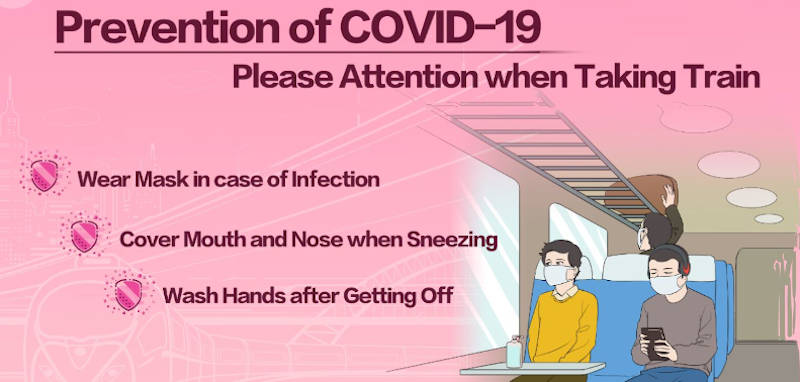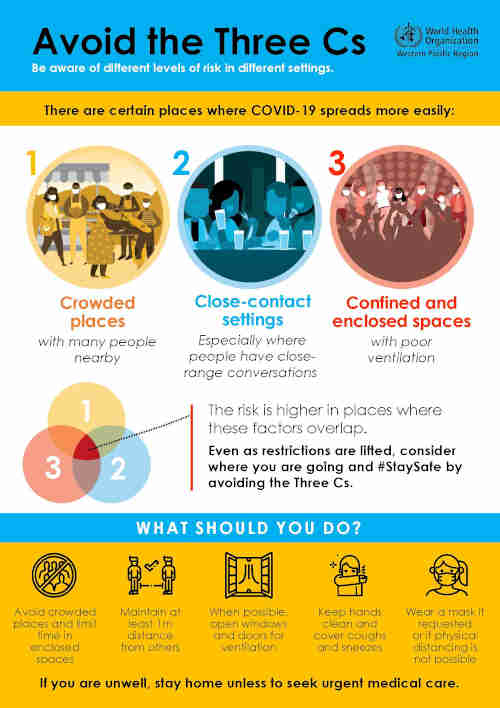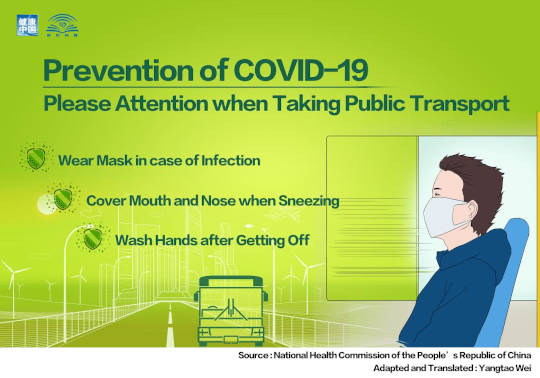Event Design in a SARS-CoV-2 pandemic
Angus Soutar
There are always risks to holding events where people gather together. Those risks need to be understood and managed appropriately. Currently, the risk that someone will die as a result of attending one of our events is very low. However, it is possible that some people present could be incapacitated by the disease, perhaps on a permanent basis. We must proceed with caution until we know more.
When staging an event during an epidemic we have a responsibility for those attending, but also to the wider community. The responsibility is clear: to prevent the spread of infectious disease. The characteristics of the SARS-2 virus suggest the following:
-
ensure all enclosed spaces are well-ventilated, model and test airflows, position people accordingly. Take breaks outside and purge the air in the room frequently.
-
indoors, be aware that there is no "safe distance" - wear masks, they are effective. Don't get too close to other people.
-
work outdoors as much as possible, continue to use masks and distancing to reduce the risk (mainly transmission by droplets).
-
carry out ruthless education on the nature of the virus and transmission, who is vulnerable and why, cultivate a healthy immune system in all who are attending.
-
agree that we all have a primary responsibility to each other to avoid infecting anyone.
Although we are aware that there is much that can still go wrong with the current pandemic, we hope that we will be OK going forward. With luck, the combined measures across the country will suppress the virus, allowing us to relax the restrictions at our events. If the precautions at the Northern School seem "over the top", we are at least learning valuable lessons in practice, and we should be better prepared for the next pandemic as a result. (There will be more, although no-one can say when.)
It is ironic that our ancestors knew that infectious diseases were carried on "bad air" and they protected their communities with strict quarantine (literally, "forty days"). We seem to have forgotten these basic precautions in our sophisticated, globalised world.
 |
 |
Policy objectives
In carrying our responsibilities to the wider community, we can "do our bit" to support national policy objectives.
First and foremost, don't overload the hospitals. Forget about "Save the NHS", let's have some respect for the people who work in hospitals. Many of them are being traumatised as they struggle to save lives and they sometimes have to carry the experience of watching their colleagues dying, too. Behind the closed doors and the empty corridors, it's like a war zone. We all have a responsibility - every citizen and every organisation - to give our hospital staff an easier task. And let's be mindful of the diversion of existing hospital capacity which is denying the usual treatments to people in urgent need.
Some will, no doubt, say that only the old, the vulnerable and the already ill are affected by the virus. Surely, they argue, we will be better off as a country if these people were quietly eliminated. We should let the virus rip, and rely on the vaccines (although those vaccines are yet to be properly evaluated).
According to estimates of respected scientists such as Dr Gabriel Scally, between 5 and 10 per cent of the population, formerly people of good health, and of all ages, will suffer significant and lasting health impairments following even a "mild" dose of CoViD. In the long run, that's potentially millions of people - do the sums. There seems to be no allowance for this in the "just let it rip" proposals.
 |
| Interview with Dr Scally and his comments on: "long covid" - Twitter |
 |
The lobby for "opening up" continues to be vocal. In the UK, it seems to overlap strongly with the risk-taking politicians who backed a "hard Brexit". It was given new fuel by the Great Barrington Declaration of "Top Scientists" who proposed a "focused protection" strategy for the world. This was immediately criticised as denying and defying current evidence by a larger number of Top Scientists from WHO and other illustrious organisations, as summarised in The Lancet. News came out that the Declaration had emerged from a libertarian think tank in the USA, which is funded by money from the oil and chemical industries.
In the early days of the outbreak, the swedish policy of "shield the old people and let it rip through" was held up as a model of virtue. Now that Sweden has been ravaged and compares poorly with neighbouring countries, there is repentance in Sweden and silence elsewhere. Shielding of vulnerable people seems to be difficult to achieve without extreme isolation and resulting distress.
The main risk of allowing high rates of infection is that this will increase the chance of variants arising from the natural mutations of the virus. These variants may then "escape" the protection given by the current vaccines and multiply rapidly as a result, leaving the vaccine industry to play "catch up".
Chris Martenson has likened this virus to the honey badger - whenever you think that you have it contained, it escapes and runs wild. It is a novel coronovirus, but it is still a coronavirus and us humans have found coronoviruses in general are tricky to deal with.
All in all, we are still lacking in confidence in the current national leadership and if any of our readers are developing good practice for opening indoor events, please get in touch with us so we can compare notes.
For those readers interested in the research that we have used in our risk assessment and forward planning, read on.
Research summary
the good news
The virus is not particularly deadly. Hospital treatments have improved remarkably as doctors learned more about it, so death rates are comparable to winter 'flu. The outbreak appears to be so deadly because so many people are becoming infected at once and there is no natural immunity in the population to stop it spreading rapidly.
Only about 20 per cent of people spread the virus. Contagion is not uniform, it happens through superspreader events. The reproduction numbers (R0) are averages. In practice, one person infects many people at a single event. We should be thankful that more households have not become infected. The situation could have been much worse with a uniform spread in homes. Superspreader events are most likely on schools and restaurants where safety measures are not fully implemented. The confusion over infection in schools may arise from ignorance of the superspreader factor. As we permaculture designers know well, averages often give poor information.
Vaccination is now underway and this should reduce the severity of the illness in the target groups.
the bad news
Persistent cases of disease following even mild attacks of CoViD are now widely reported, yet tend to get buried by news about hospital deaths, vaccines, "The Economy" and so on. There are multiple instances of what is now termed "long covid" which I find quite concerning. Estimates suggests that somewhere between one-in-ten to one-in-twenty of us who develop symptoms will suffer from a bewildering number of persistent diseases.
The variety of conditions reported is probably linked to the fact that our ACE2 receptors, which are the virus's pathway to its replication, are located all round the body, so we can never be sure where the disease will manifest itself.
The virus is already highly infectious and we are already seeing the emergence of variants that make it even more so. There are already several variants circulating, and natural selection will favour those that are more transmissable. In many countries, transmission remains high, which gives the virus many opportuntities to mutate and perform "honey badger" escapes.
what we know
 |
| Avoid confined spaces |
 |
SARS-CoV-2 is spread in the air by tiny aerosol particles and larger droplets expelled by people coughing, sneezing, shouting, singing or even just talking. There is therefore no "safe distance" indoors, and the primary defence is to improve ventilation. There is increasing evidence that masks are effective, too. However new varants of the virus may lead us to upgrade our masks to provide better filtering. The less virus in the air, the less we have to rely on masks.
Risks are far lower outdoors, particularly in the sunshine (UV light) and when it is raining (virus particles get washed to the ground).
There seems to be a relationship between the amount of virus that we receive initially and the severity of any disease that results. A small initial viral load gives our immune system a chance to react and eradicate the virus before serious symptoms arise. Obviously, this is another reason to wear masks.
As mentioned earlier, children can contribute to infection and schools can host superspreader events unless the classrooms are redesigned carefully.
Handwashing is an ineffective prevention strategy for SARS-CoV-2. It may have a limited effect although we should all definitely continue to do it because of other diseases. There is a lot of controversy over the viability of virus particles ("fomites") deposited on surfaces. Early studies relied on detecting the viral RNA, but handwashing is increasingly seen as "security theatre" as far as preventing the spread of the SARS-CoV-2. Should the virus enter our upper airways via our skin, then our immune system will usually deal with it. Breathing tiny particles directly into the lungs, however, provides the virus with exactly what it need to reproduce.
Yet more evidence is emerging that our first line of defence is our own immune system, as I discussed on our autumn issue under the heading of "Personal Responsibility". Evidence concerning the importance of Vitamin D continue to accumulate. There is a growing consensus that the recommended supplementation of Vitamin D should be about 10 times the current recommended daily allowance for those living in winter away from the tropics. The RDA is currently 400IU which appears to have been set to support healthy growth of bones without considering multiple other functions of Vitamin D, including its support of the immune response.
what we don't know
A year in, and there is still much that we don't know, or cannot measure effectively. As those of you who attend our courses will know, it is what we don't know that is is usually the most important factor in any risk analysis.
 |
 |
testing
One of the most distressing things for us as a small business is that we still have no idea where the virus is in mainland Britain. (They have cracked it in the Isle of Man but, quite sensibly, they won't let us visit there). If, as in other countries, we know where the virus "hot spots" are, then we can take evasive measures and it will be clear to our customers and our community why we are doing so. Not least, this will avoid arguments about whether we are being too cautious. Shared information also gives rise to a feeling of the community working together to solve a common problem.
A key feature of this "honey badger" virus is that testing for it is problematic. Countries like South Korea, Taiwan and Vietnam seem to have solved the problem at the community level. But a small business needs accurate results for individuals and, at present, there is no certainty on this anywhere, apart from the fact that some people test positive.
The PCR test is the one that is used most widely in the UK. This is the one where you shove a cotton bud into one of your upper orifices until you feel that it has either penetrated your brain or that you are about to regurgitate your breakfast. Of all the "field" tests, it gives the most accurate diagnosis of infection. If you test positive with this, then it is fairly certain that you are carrying the virus. What it does not tell you is:
- whether you will become ill
- whether you are spreading the virus or not
- at what stage of disease you have reached
There is an important, yet little known, feature of the PCR test concerning the number of amplification cycles performed in the laboratory to cultivate the virus in your sample to a detectable level. If the cycle number is low (lower than 10) you are carrying a relatively large amount of the virus and should take preventative measures (to boost your immune system) immediately. People with a low cycle count tend to get more illness - it's that "initial viral load" feature again. On the other hand, if the number of cycles to get a poitive result is greater than 30, then the results are unreliable, the test is becoming inaccurate. (This is known as the cycle threshold). Most labs give up at 40 and declare a negative result. Should you test positive, it is worth getting the cycle count of your test sample.
If you think about it, the PCR test detects the virus in your upper airways. But the virus may not be there, it might have gone deeper inside you. You can test negative with PCR and still have the virus. You are unlikely to spread the virus if it is not in your upper airways. But one place where the virus can build up is in the intestines, so care has to be taken with flushing toilets, also sewage sytems in locations such as blocks of flats, where leaks may get into the atmosphere.
PCR tests take samples from the upper repiratory system, where the virus may only be present for a few days. After which, if unchecked, it can migrate to most of the organs in the body so we can be infected and yet test negative with PCR.
"Quick" lateral flow tests have been trialled in the UK, but they are only good enough to be used by Public Health for population statistics. They have proved far too inaccurate to use for individual diagnosis.
Antibody tests, too, are only hepful at a population level. Again, the tests falls over at the individual level, since many of us rely on a T-cell response to fight of this virus, and show no evidence of antibodies at all. Y-cell response is difficult to test for, and expensive, too..
So, we struggle to keep up with the honey badger once it escapes:
- people can be without symptoms yet still spread the virus
- people incubating the disease can test negative and still be infected
- only a minority of people who have suffered infection will show antibodies
Personally, I am very much in favour of testing because it gives us a good indication of where the disease is, and gives us sound information to manage the risks and plan forward. However, as indivduals, we cannot rely on test results alone, and there is no clear test to tell us whether we will have immunity, or not.
vaccines
At the time of writing, there are still many things that we don't know about vaccines. They already look promising in suppressing the disease, but we still have to see how effective they are in preventing transmission. "Herd immunity" is reached humanely with vaccines. but we still have to find out how quickly we can get there with a "honey badger" virus on the loose.
The major risks originate in countries with high infection rates. More virus reproduction and longer recovery times means that will be more "mistakes" when the viral RNA is copied inside our insides. The more variations, the higher the chance is that our antibodies from the carefully targetted vaccines will no longer recognise the variants. (Stop a minute and consider the vaccines for winter 'flu.) Widespread travel and open borders help spread the new variants and before we know it the honey badger has escaped again.
Vaccines are unlikely to be a "magic bullet". We consider it risky to base policy on the efficacy of vaccines alone, with "vaccine passports" and so on. But even if vaccines are not as effective as we are assuming, they can still lead us to a place where we can finally get the outbreak suppressed. We are not out of the woods yet, but we can see the path.
1001 things to do in lockdown
Weary of all the virus talk?
Try this "viral" video of a police raid in the woods (sent in by a friend of a friend of a friend).
| Police raid illegal picnic - from viral video - on Vimeo.</ |
 |
Find that one a bit bucolic? Still depressed about travel restrictions? Why not try a quick virtual "staycation" with Yorkshire Airlines. " 'eyup and away!"
| Hale and Pace (2006) |
 |